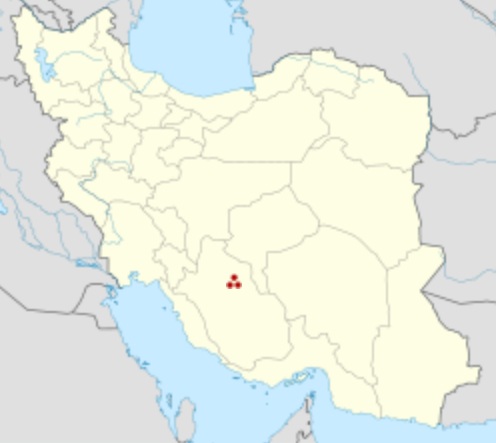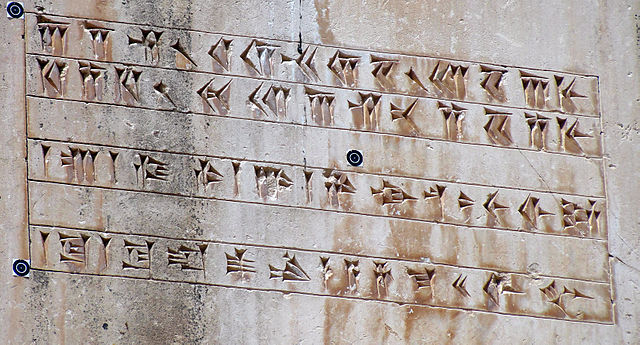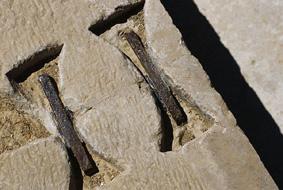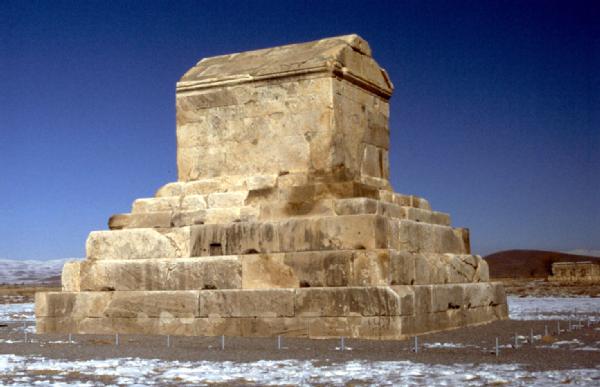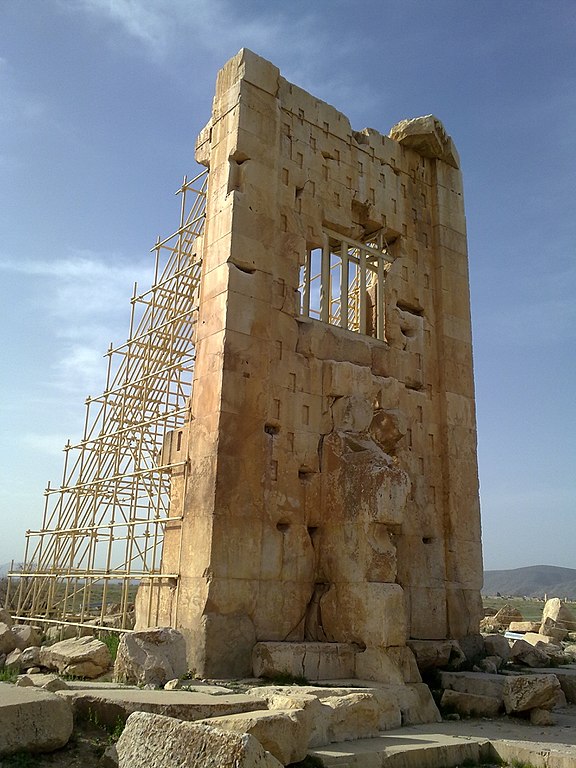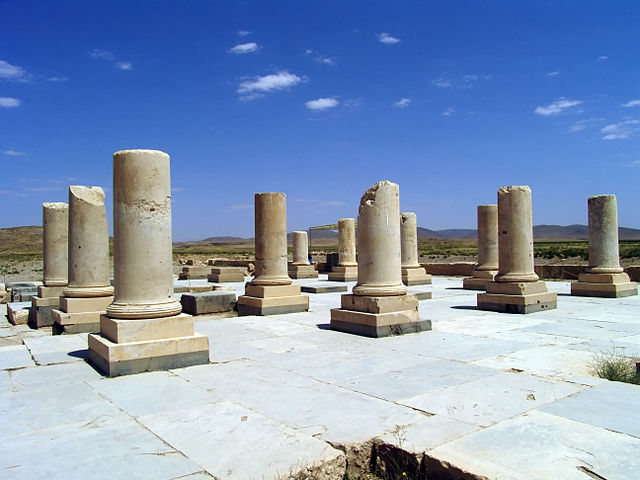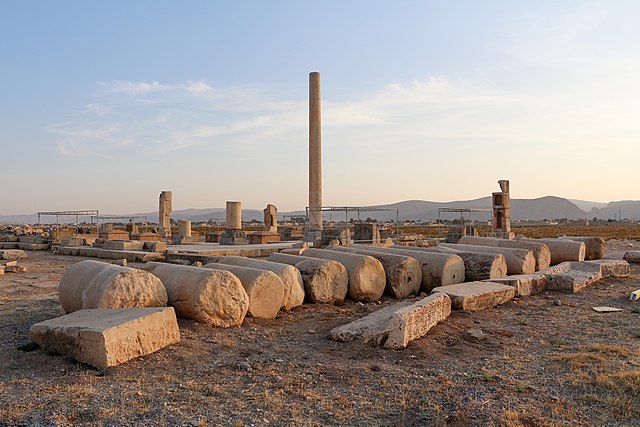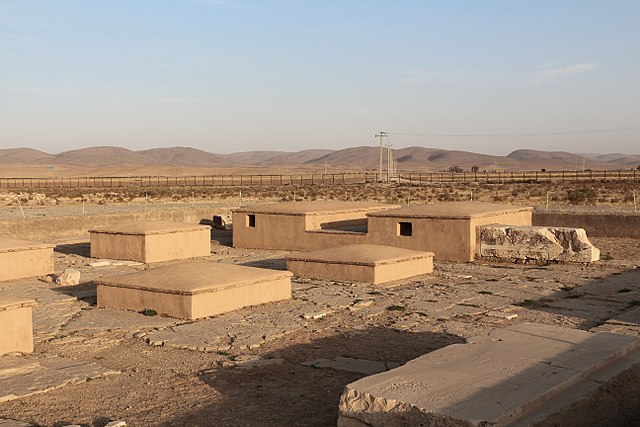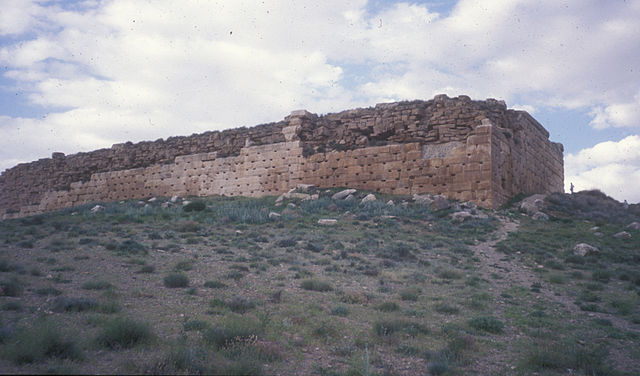
| PASARGADAE
Pasargade, Iran
Tomb of Cyrus the Great in Pasargadae Location : Fars Province, Iran
Region : Iran
Coordinates : 30°12′00″N 53°10′46″E
Type : Settlement
History
Builder : Cyrus the Great
Material : Stone, clay
Founded : 6th century BCE
Periods : Achaemenid Empire
Cultures : Persian
Site notes
Archaeologists : Ali Sami, David Stronach, Ernst Herzfeld
Condition : In ruins
UNESCO World Heritage Site
Criteria : Cultural: (i), (ii), (iii), (iv)
Reference : 1106
Inscription : 2004 (28th session)
Area : 160 ha (0.62 sq mi)
Buffer zone : 7,127 ha (27.52 sq mi)
Pasargadae (Old Persian: "protective club" or "strong club"; Modern Persian: Pasargad) was the capital of the Achaemenid Empire under Cyrus the Great (559–530 BCE), who ordered its construction. Today it is an archaeological site and one of Iran's UNESCO World Heritage Sites, about 90 kilometres (56 mi) to the northeast of the modern city of Shiraz. A limestone tomb there is believed to be that of Cyrus the Great. History
:
The archaeological site covers 1.6 square kilometres and includes a structure commonly believed to be the mausoleum of Cyrus, the fortress of Toll-e Takht sitting on top of a nearby hill, and the remains of two royal palaces and gardens. Pasargadae Persian Gardens provide the earliest known example of the Persian chahar bagh, or fourfold garden design (see Persian Gardens).
The remains of the tomb of Cyrus' son and successor Cambyses II have been found in Pasargadae, near the fortress of Toll-e Takht, and identified in 2006.
The Gate R, located at the eastern edge of the palace area, is the oldest known freestanding propylaeum. It may have been the architectural predecessor of the Gate of All Nations at Persepolis.
Tomb of Cyrus the Great :
"I am Cyrus the king, an Achaemenid." in Old Persian, Elamite and Akkadian languages. It is carved in a column in Pasargadae The most important monument in Pasargadae is the tomb of Cyrus the Great. It has six broad steps leading to the sepulchre, the chamber of which measures 3.17 m long by 2.11 m wide by 2.11 m high and has a low and narrow entrance. Though there is no firm evidence identifying the tomb as that of Cyrus, Greek historians say that Alexander believed it was. When Alexander looted and destroyed Persepolis, he paid a visit to the tomb of Cyrus. Arrian, writing in the second century CE, recorded that Alexander commanded Aristobulus, one of his warriors, to enter the monument. Inside he found a golden bed, a table set with drinking vessels, a gold coffin, some ornaments studded with precious stones and an inscription on the tomb. No trace of any such inscription survives, and there is considerable disagreement to the exact wording of the text. Strabo reports that it read :
Passer-by, I am Cyrus, who gave the Persians an empire, and was king of Asia.
Another variation, as documented in Persia: The Immortal Kingdom, is :
O
man, whoever thou art, from wheresoever thou comest, for I know
you shall come, I am Cyrus, who founded the empire of the Persians.
The design of Cyrus' tomb is credited to Mesopotamian or Elamite ziggurats, but the cella is usually attributed to Urartu tombs of an earlier period. In particular, the tomb at Pasargadae has almost exactly the same dimensions as the tomb of Alyattes, father of the Lydian King Croesus; however, some have refused the claim (according to Herodotus, Croesus was spared by Cyrus during the conquest of Lydia, and became a member of Cyrus' court). The main decoration on the tomb is a rosette design over the door within the gable. In general, the art and architecture found at Pasargadae exemplified the Persian synthesis of various traditions, drawing on precedents from Elam, Babylon, Assyria, and ancient Egypt, with the addition of some Anatolian influences.
Archaeology :
Dovetail Staples from Pasargadae The first capital of the Achaemenid Empire, Pasargadae lies in ruins 40'40 kilometers from Persepolis, in present-day Fars province of Iran.
Pasargadae was first archaeologically explored by the German archaeologist Ernst Herzfeld in 1905, and in one excavation season in 1928, together with his assistant Friedrich Krefter [de]. Since 1946, the original documents, notebooks, photographs, fragments of wall paintings and pottery from the early excavations are preserved in the Freer Gallery of Art, Smithsonian Institution, in Washington, DC. After Herzfeld, Sir Aurel Stein completed a site plan for Pasargadae in 1934. In 1935, Erich F. Schmidt produced a series of aerial photographs of the entire complex.
From 1949 to 1955, an Iranian team led by Ali Sami worked there. A British Institute of Persian Studies team led by David Stronach resumed excavation from 1961 to 1963. It was during the 1960s that a pot-hoard known as the Pasargadae Treasure was excavated near the foundations of 'Pavilion B' at the site. Dating to the 5th-4th centuries BC, the treasure consists of ornate Achaemenid jewellery made from gold and precious gems and is now housed in the National Museum of Iran and the British Museum. It has been suggested that the treasure was buried as a subsequent action once Alexander the Great approached with his army, then remained buried, hinting at violence.
After a gap, work was resumed by the Iranian Cultural Heritage Organization and the Maison de l'Orient et de la Méditerranée of the University of Lyon in 2000. The complex is one of the key cultural heritage sites for tourism in Iran.
Sivand
Dam controversy :
Its placement between both the ruins of Pasargadae and Persepolis has many archaeologists and Iranians worried that the dam will flood these UNESCO World Heritage sites, although scientists involved with the construction say this is not obvious because the sites sit above the planned waterline. Of the two sites, Pasargadae is the one considered to be more threatened. Experts agree that the planning of future dam projects in Iran will merit an earlier examination of the risks to cultural resource properties.
Of broadly shared concern to archaeologists is the effect of the increase in humidity caused by the lake. All agree that the humidity created by it will speed up the destruction of Pasargadae, yet experts from the Ministry of Energy believe it could be partially compensated for by controlling the water level of the reservoir.
Construction of the dam began 19 April 2007, with the height of the waterline limited so as to mitigate damage to the ruins.
In
popular culture :
Gallery :
Tomb of Cyrus the Great
The "prison of Solomon", another part of the ruined compound, which may be the tomb of Cambyses I
The Private Palace
The Audience Palace
The Gateway Palace
The citadel of Pasargadae. At its top many column bases indicate the structure was not unlike the Athenian Acropolis in positioning and structure
Caravanserai of Mozaffari, built during the Mozaffari dynasty
Pasargad audience hall
Source :
https://en.wikipedia.org/ |
